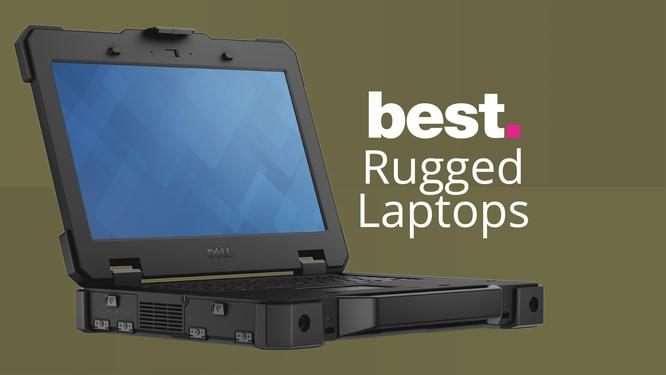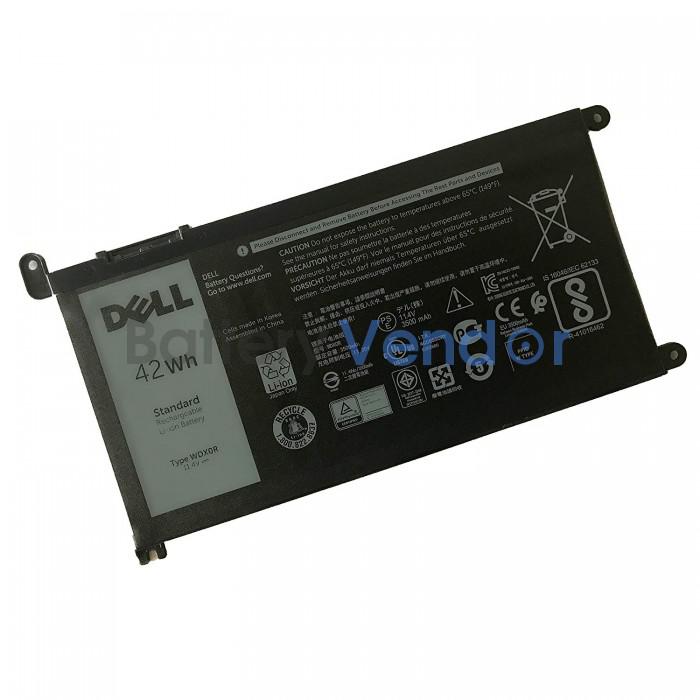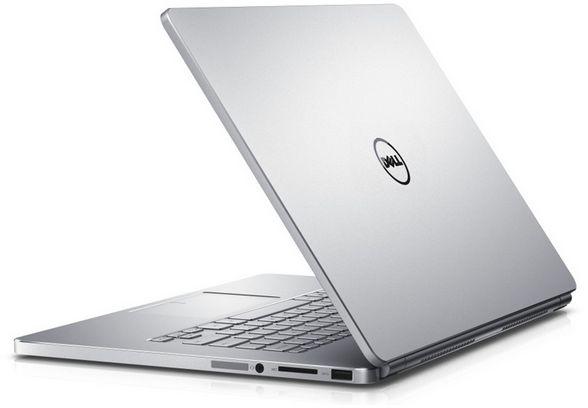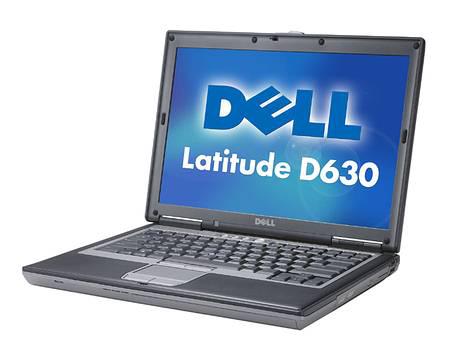Who's tougher, Dwayne Johnson or Jason Statham? The answer (Chuck Norris obviously) is about as conclusive as advertising for
laptops
with vague, overlapping descriptions such as "semi-rugged", "fully rugged" and "business-rugged". But the need for notebooks (and tablets) that can leak and click away is very real.
Let's get one thing straight right away: when PCMag talks about "rugged laptops," we're not talking about business travelers worried about a little turbulence in an airline overhead compartment. Truly rugged laptops are vertical marketers designed for work in the field or in factory floors. They can be carried by first responders or military personnel, or mounted on the dashboard of police cars. They may need to survive if rained on a hard surface, fallen six feet onto a hard surface, or work in freezing or sweltering temperatures or clogged by clouds of dust or sand thrown up.
What's the price you pay for such super-rugged survivability? One is the literal price indeed: Rugged laptops cost a lot more than their civilian counterparts. Second, the weight: A laptop with virtual armor can break your biceps at 10 pounds, an immense burden compared to the three or four pounds of most laptops. That's why many of the True Blue Rugged models come with fold-out carrying handles.
(Photo: Zlata Ivleva)
Still, for users who need serious computing power in hostile environments, there's no substitute for a laptop that can laugh at abuse that would destroy a regular machine. Let's go through the top things to look out for when shopping. And we lead you to reviews of some of our favorite true rugged laptops. Buckle up, it's going to be a bumpy ride.
Business desk inserts: MIL-STD 810G
Before we delve into beefy machines that can survive drops and water jets from two meters, we have to acknowledge that not all mainstream notebooks are fragile and fragile. Some Lenovo ThinkPads, HP EliteBooks, and other business systems are reasonably resilient to shocks and bruises, though they won't survive high dives or liquids beyond minor keyboard spills. Even some Chromebooks carry the same designation as these rugged travelers — MIL-STD 810G, which indicates compliance with a suite of tests mandated by the US Department of Defense for requires the use of a device in a military environment.
(Photo: Zlata Ivleva)
The MIL-STD 810G standard includes over 800 pages and nearly 30 laboratory test methods for challenges ranging from weather (high and low temperatures, rain, and humidity) to physical forces (acceleration, vibration, and shock). Few computer manufacturers push their Products over all the hurdles that the standard posits, including such tortures as gunfire, icing or freezing rain, whether a laptop could explode in flammable gas atmospheres, and - wait for it - resistance to fungi. Rather, the manufacturer can state that the For example, the system passed 10 or 12 MIL-STD tests.
The problem with a MIL-STD 810G sticker on a laptop box or vendor's website is that it doesn't tell you enough. Since no independent agency certifies MIL-STD compliance, it's up to you to look for documentation or details to look up what tests a product passed, who performed the tests—the manufacturer or an outside lab—and how the tests were performed. For example, since users tend to drop laptops, certification for shock is a popular claim .However, there is no rule as to what height a device should fall from.
Does this render the certification useless? Not at all. Just think of it as a checklist item or the first thing to look for, rather than a guarantee of bulletproof reliability, and be aware to read the fine print.
Braving the Elements: IP Ratings
A stricter abbreviation seen on seriously rugged laptops is a code like "IP65". IP stands for "Ingress Protection" - the ability to keep solids or liquids out of the machine's delicate innards. This rating is measured numerically and not by general terms like "dustproof" or "water-resistant".
You can read ours
Primer to IP and MIL-STD ratings
for full details, but here's IP in a nutshell. The first digit after the letters "IP" represents protection against solid objects on a scale of 0 to 6. The number 2 means you can't put your fingers inside the device. The number 4 means the system is protected against objects larger than 1mm like most wires; 5 means some and 6 means full protection against dust and sand.
The second digit after IP measures protection from liquids, this time on a scale of 0 to 9. A device rated 1 will withstand a few vertical drops; 4 means splashing water and 5 means water jets; and 7 and 8 refer to immersion in less than a meter, or in one to three meters of water. Unlike some smartphones, no laptop we know of can be fully submerged. So don't expect a liquid rating to be higher than 5.
(Photo: Zlata Ivleva)
A sure sign that a manufacturer takes IP rating seriously is sealed ports - doors that cover connections such as USB ports and HDMI video-out ports. Differences in these doors can contribute to rating differences: those of the
Dell Latitude 5424 Rugged
, for example snapping securely as part of the system's IP52 rating...
(Photo: Zlata Ivleva)

The doors that the
Latitude 7424 Rugged extreme
In contrast, the ports are waterproof and feature sliding, lockable latches. This laptop's rating is IP65...
(Photo: Zlata Ivleva)
Evaluation of the chassis
Other things to look for in a rugged laptop start at first glance - the outer casing, or casing. Obviously, the flimsy plastic of many consumer models turns to shrapnel when faced with rugged PCs, though amazing is, which can add a little amplification. For example, computer specialist CTL says the lid of its
Chromebook NL61TX
(replaced by the NL7X since our test) can withstand the weight of some books piled on top of it in a desk or backpack - can actually withstand 365 pounds of pressure before the screen shatters.
Magnesium or magnesium-aluminum alloys are more common chassis materials, with rubber or rubberized bumpers on the corners of a laptop being a popular fall protection measure. The aforementioned Dell Latitude 7424, for example, has a steel-reinforced security lock.
We've already talked about doors that cover ports, but as with any laptop, you should consider what ports you need. Machines built for factory floor use are among the last to have RS-232 serial communications. Ports that are often used to connect to legacy data collection devices. Others have modular or removable bays for storage drives or batteries, or slots for mobile broadband SIM cards so you can get online on the go, away from Wi-Fi hotspots.
(Photo: Zlata Ivleva)
Though you can't easily see them, many rugged laptops feature specially shock-resistant components. It was a boon to the category when shock-resistant solid-state drives (SSDs) replaced relatively delicate, spinning hard drives, but some vendors are going beyond that - the
Panasonic Toughbook 31
actually has a heated SSD that works even in freezing temperatures.
Real practical problems: consider gloves and rain
Virtually all laptop screens are good enough for work in your average office. Take one outside, however, and it's a whole different story.
When viewing a typical display in direct sunlight, it can become invisible without enough contrast to discern more than the faintest ghost of an image. For this reason, many rugged laptops have extra-bright displays, with brightness levels of 1,000 or higher more nits compared to the 200 to 400 of most indoor optimized systems.
You'll also find reinforced glass to prevent cracking or breaking, although you almost certainly won't find the 4K resolution (3840 x 2160 pixels) of traditional flagship laptops -- rugged screens tend to hit Full HD or 1080p (1920. ). of 1,080 pixels), although some are satisfied with even lower, older resolutions such as 1,024 x 768.
With these laptops, keep in mind that touchscreens are a special case. Most of today's touchscreen laptops use capacitive technology, where a nearly transparent digitizing layer over the panel detects your finger via the electrical conductivity of your skin. Fine, but what if Wearing gloves? Oops - capacitive technology doesn't work. The solution is a resistive touchscreen design where - with a little more pressure from you - the top layer flexes to complete a circuit with another layer below.
(Photo: Zlata Ivleva)
The same goes for the touchpads found in the palm rests of laptops. Capacitive pads are useless if you're wearing gloves or it's raining, while a dual-layer resistive touchpad can leave marks in wet or adverse conditions. On the negative side, you can note that a resistive pad requires so much pressure that it feels awkward with a dry, bare finger.
(Photo: Zlata Ivleva)
I mentioned that many business systems have spill-resistant keyboards and drain holes in the bottom to save your bacon if you spill a few ounces of water. It's no surprise, then, that rugged keyboards are designed not to drown in even greater amounts. Depending on the weather you're working in, some manufacturers offer a choice of keyboards for wet or wet conditions, the latter with rubberized or coated ones Keys that sacrifice a little typing feel for added protection.
So which rugged laptop should I buy?
Time to check out some tougher-than-average laptops and convertibles! The models below are some of our favorites. They passed at least MIL-STD testing; at most, they're the next best thing to bulletproof. We'll update this guide as we find additional true- Review Rugged systems. Thanks for reading, and let's be careful out there.





